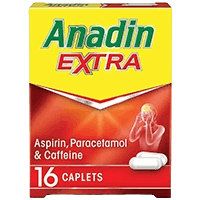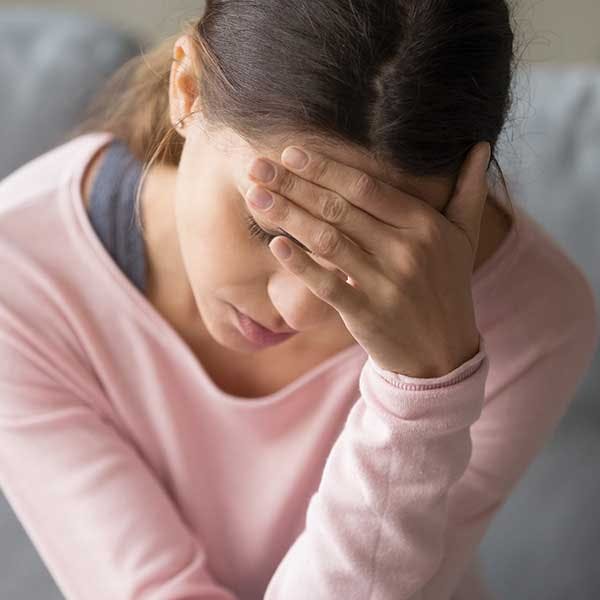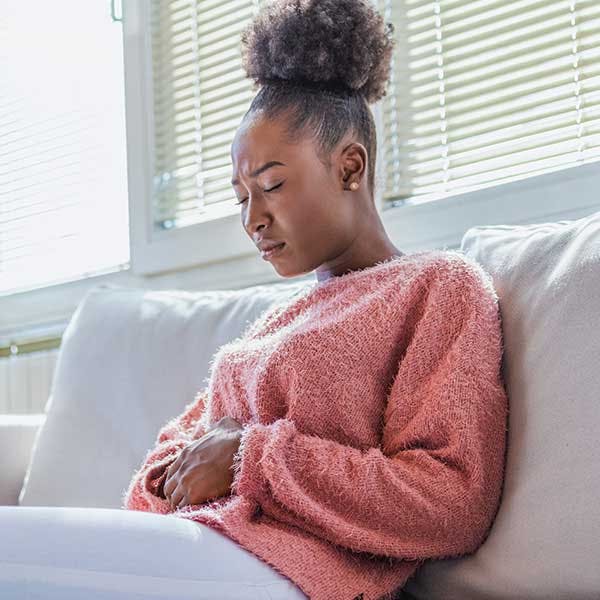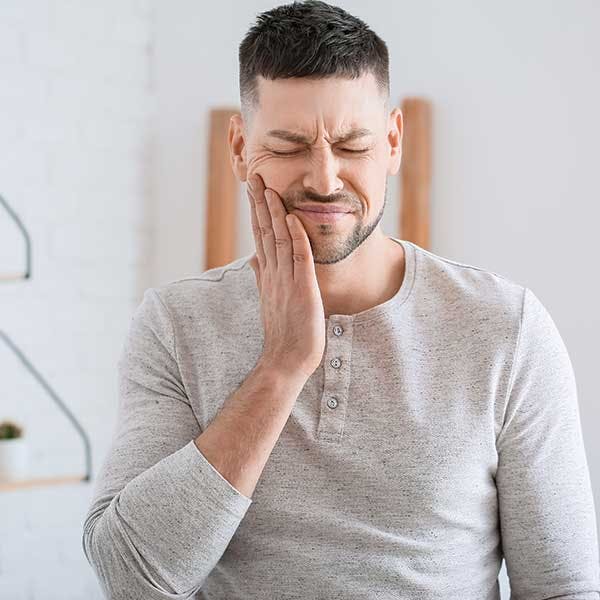Aspirin + Caffeine
Aspirin + Paracetamol + Caffeine
Anadin Extra Tablets Anadin Extra Soluble Tablets
Paracetamol
What is a Headache?
You’ve probably experienced a headache at some point throughout your life as it’s a very common condition. Half to three quarters of adults aged 18-65 years in the world have had a headache in the last year.
A headache is a consistent pain in any region of your head that can last anywhere from a few minutes to a few days. This can be throbbing, sharp or shooting pains. Your headache might be located on one side of your head, your entire head or even in or around your eye.
Headaches occur when signals interact among the brain, blood vessels and surrounding nerves. An unknown mechanism activates specific nerves that affect muscles and blood vessels. These nerves send pain signals to the brain.
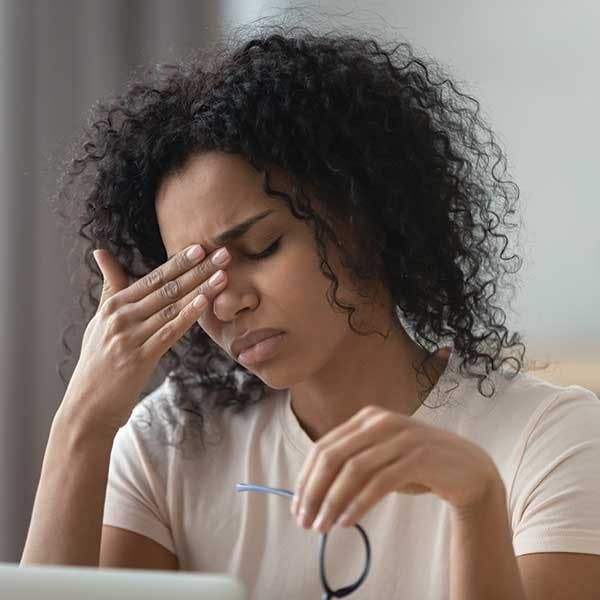
Different Types of Headaches
There are over 150 types of headaches, which are divided into two categories – primary and secondary.
Primary Headaches
Primary headaches are caused by problems with pain-sensitive structures in your head. Chemical activity in your brain, the nerves or blood vessels surrounding your skull, or the muscles in your head and neck can play a role in primary headaches. The good news is primary headaches are not a sign of underlying illness.
Common primary headaches include:
- Tension Headaches. The most common type of headache, which causes mild pain and is not considered dangerous.
- Migraines. The second most common type of headache, classified as a neurological disease that can cause debilitating pain.
Secondary Headaches
Secondary headaches are a different type of headache you might experience. They can activate the pain-sensitive nerves in your head and are usually caused by another condition or may be a sign of an underlying illness.
Common secondary headaches include:
- Sinus Headaches. Occur from a viral upper respiratory infection or a cold, which causes inflammation and congestion in the sinus cavities. Common if you’re suffering with a cold or have allergies.
- Spinal Headaches. Caused by spinal anaesthesia.
- Thunderclap Headaches. A very rare and dangerous type of headache, these are severe headaches that peak within 60 seconds and could be a potential sign of bleeding around the brain.
- External Compression Headaches. Caused an item putting continuous pressure on your forehead or scalp, such as helmets or goggles.
- Medication Overuse Headaches. Caused by taking excessive pain medication to relieve headaches.
What causes headaches?
There are multiple different factors that can trigger a headache. Some might be environmental, whilst others may be caused by another condition or a sign of an underlying disease. Common headache causes include:
- Drinking too much alcohol
- Cold and flu
- Bad posture
- Having your period or during menopause
- Stress
- Dehydration – not drinking enough fluids
- Taking too many painkillers
- Eyesight problems
- Not eating regular meals
Headache symptoms
Each type of headache has unique symptoms, which is why it’s important to identify your symptoms as soon as possible.
Tension Headaches
- Mild to moderate pain
- Consistent
- Pain of both sides of your head
- Responsive to over the counter medication
- Worsens during physical activities
Migraines
- Moderate to severe pain
- Nausea or vomiting
- Pounding or throbbing
- Long intervals (hours or days)
- Sensitivity to light, noise, or odours
- Abdominal pain
Headache Treatment and Medication
The first step towards treating a headache is finding out what triggers your headaches. We recommend keeping a log or journal to track your headaches. This will help you find a solution much quicker.
What are suitable headache treatments?
The most common headache remedies are over the counter pain medication, such as Anadin Extra, which has a triple action formula – aspirin, paracetamol and caffeine, that gets to work in just 5 minutes* for effective pain relief of headaches and migraines.
*based on caffeine absorption data
Headaches can also be treated with stress management, which teaches you how to cope with stressful situations. It involves deep breathing, muscle relaxation, mental images, and music to ease your tension.
To Do/Not To Do list for Headache Sufferes
Do’s
- Keep hydrated by drinking plenty of water
- Get plenty of rest (especially if suffering from the cold or flu)
- Reduce stress, try to relax
- Take pain medication
Don’ts
- Do not drink alcohol
- Do not sleep more than usual – this can make it worse
- Do not skip meals
- Do not strain your eyes for long periods of time, for example looking at a screen
Refer to the product label for information about how to use the product, and seek medical advice from a healthcare professional if symptoms persist or get worse.






